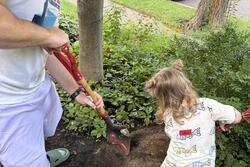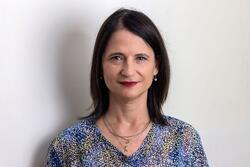In the thrall of hope: 23 years of Women of the Wall
In December of 1988, a group of Israeli and American Jewish women met at the Western Wall to read torah. Bonna Haberman, one of the women present on that day, suggested that a women’s prayer group meet at the Wall every Rosh Hodesh, and Women of the Wall was born. From the very first gathering, the group has confronted hostile responses including physical assaults and thrown stones, chairs, and dirty diapers. Assertion of their right to pray together as women out loud and to conduct a public Torah service has led not only to physical struggles but also to a protracted legal confrontation. In July of 2010, Women of the Wall leader Anat Hoffman was arrested. As we pass the 23rd anniversary of the founding of Women of the Wall, Chanel Dubofsky relfects on Anat Hoffman's arrest.
July 2010: What I remember first is that I had slept badly the night before, as I usually do when I have to be somewhere very early in the morning, and by the time I'd be able to get out of the apartment in Jerusalem's Rehavia neighbourhood and down to the Kotel Plaza, I was already late. As I veered crazily through the streets of the Old City, sweating and frustrated, I considered going back. I didn't, though, in the name of having of having a this unique and Israeli feminist experience.
When I got to the Wall itself, it seemed to be the usual collection of black hats, long skirts, Birthright trips, other tourists. There was no sign of the Women of the Wall, and so I went down to Robinson's Arch. The Arch is where egalitarian prayer groups typically gather, and where I was ushered to on Shavuot of 2010, when a friend found me hovering around the women's section, angry and lost. "Do you know about the secret egal minyan?" he asked. I did not, but I followed him, and there they were, folks, male and female and genderqueer, whom I knew from many different Jewish lives, gathered together to read and pray. My relief was dizzying.
On this July morning, however, there was no crowd at the Arch, only one bespectacled women in a baggy orange t shirt, drinking from a nearby water fountain. When she saw me, she said, 'Are you looking for the Women of the Wall?" I said I was. "Anat's been arrested for carrying a Torah across the plaza," she told me, "She's at the Municipality near Jaffa Gate, and so are the others. You should go there." I nodded, mutely. I don't remember if I thanked her, but as I walked away, I heard her say, "I don't know what's happening to this country."
I got to the Municipality eventually, although I came very, very close to going home after getting lost again in the Old City. I made it to Jaffa Gate only because I followed the sounds of women singing. There were probably 50 of them, mostly American, determined to stay until Anat was released. It was a confusing combination of joy and desperation and anger. I had a moment of thinking that finally, after feeling depleted from spending the last ten days staffing Birthright and trying to mitigate all sorts of complexities, that I had found my people.
It felt true, and as it turns out, it wasn't. I would also find my people later that month, when I started going to a cafe in Jerusalem that was opened on Shabbos, when I went to a dance performance with a friend, and when I spent a weekend in Tel Aviv, taking pictures of feminist graffiti. But in those hot, exhausting hours I spent at Jaffa Gate, something else happened. I started to let go.
This is something I only know now, perhaps. It's clarified itself like butter in the year and a half since I've been in Israel. What was once a search to understand and take part in observant Judaism has become a deep skepticism and a reticence to being in Jewish prayer spaces in general. That day outside the Municipality, after the moment I thought that the women around me were my people, I found myself wondering if they really were. We were all certainly (hopefully?) feminists, but nevertheless, I felt an almost cavernous separation from them.
I marvel at the tenacity of feminists who haven't severed their connections to observant Judaism while faced with such blatant misogyny. I don't think I can hold both, at least not right now. That day in 2010, I was so sure it was possible for me, I was in the thrall of such hope. You would have had to pry my fingers off of it, one by one.






